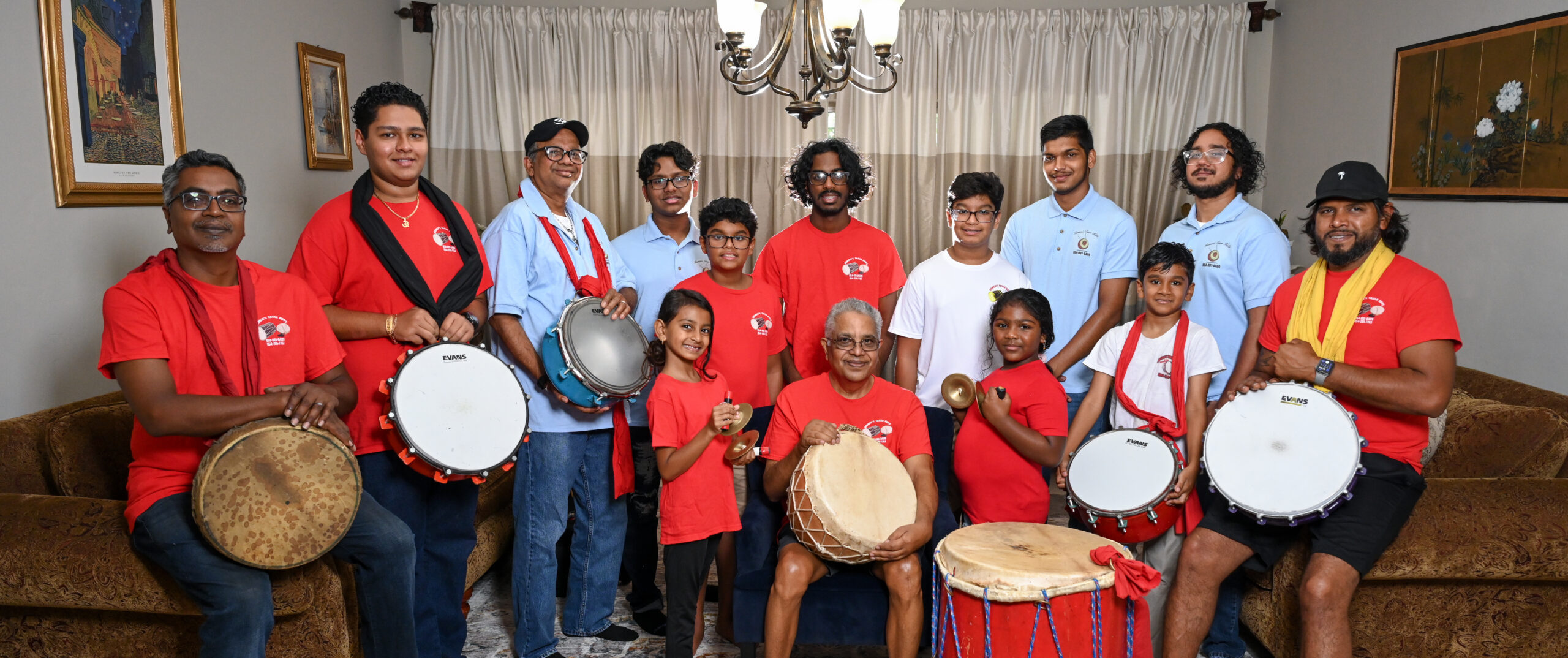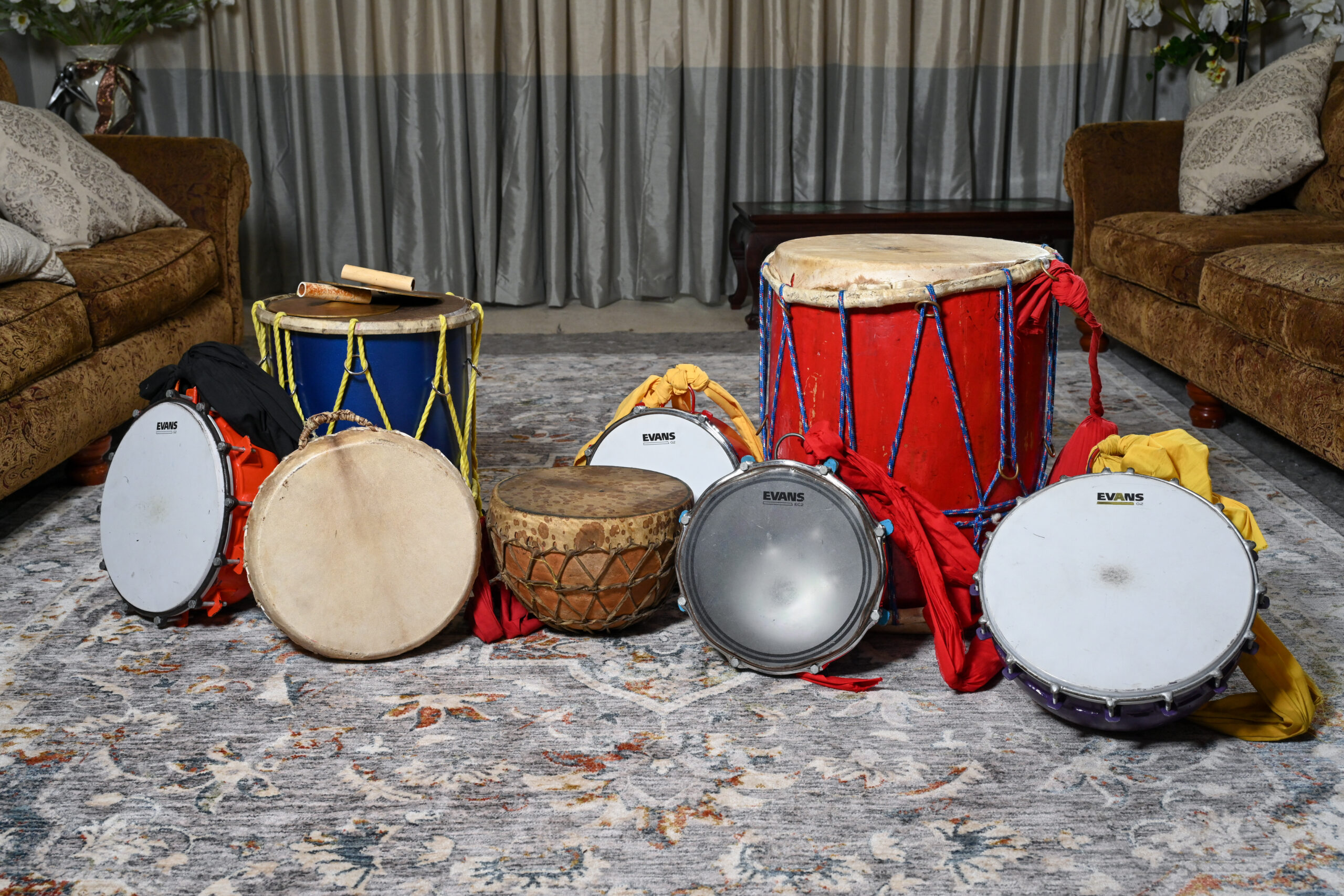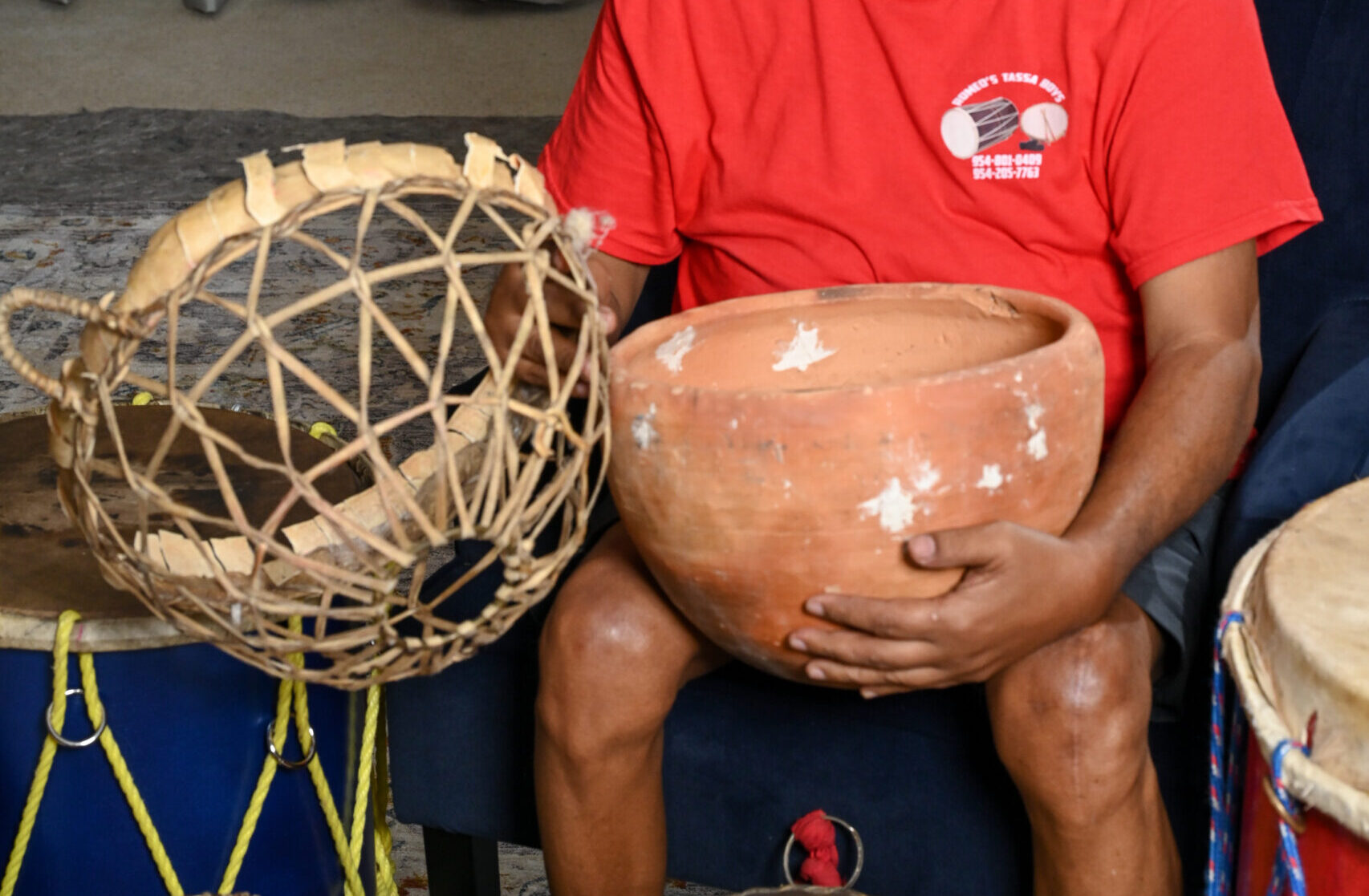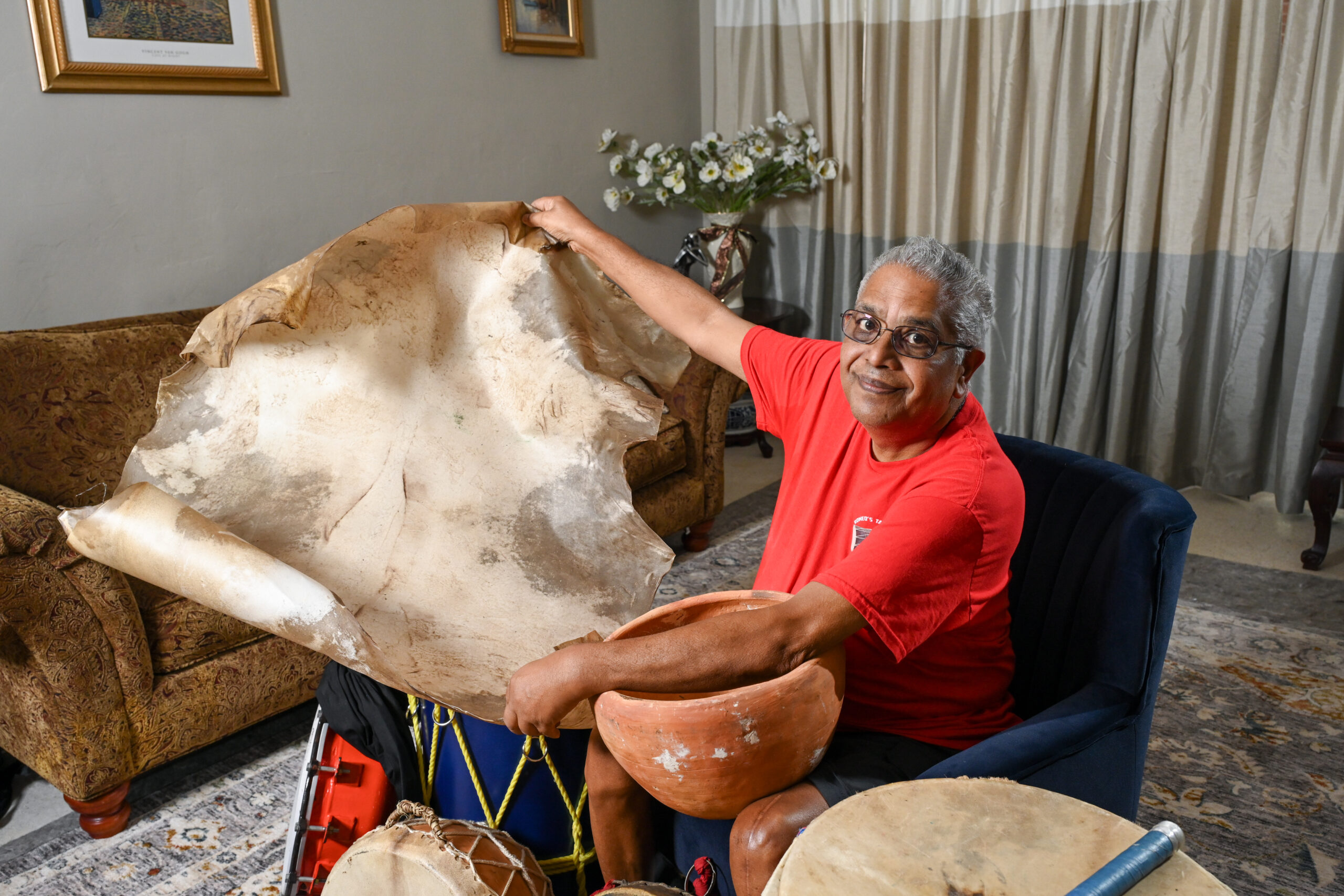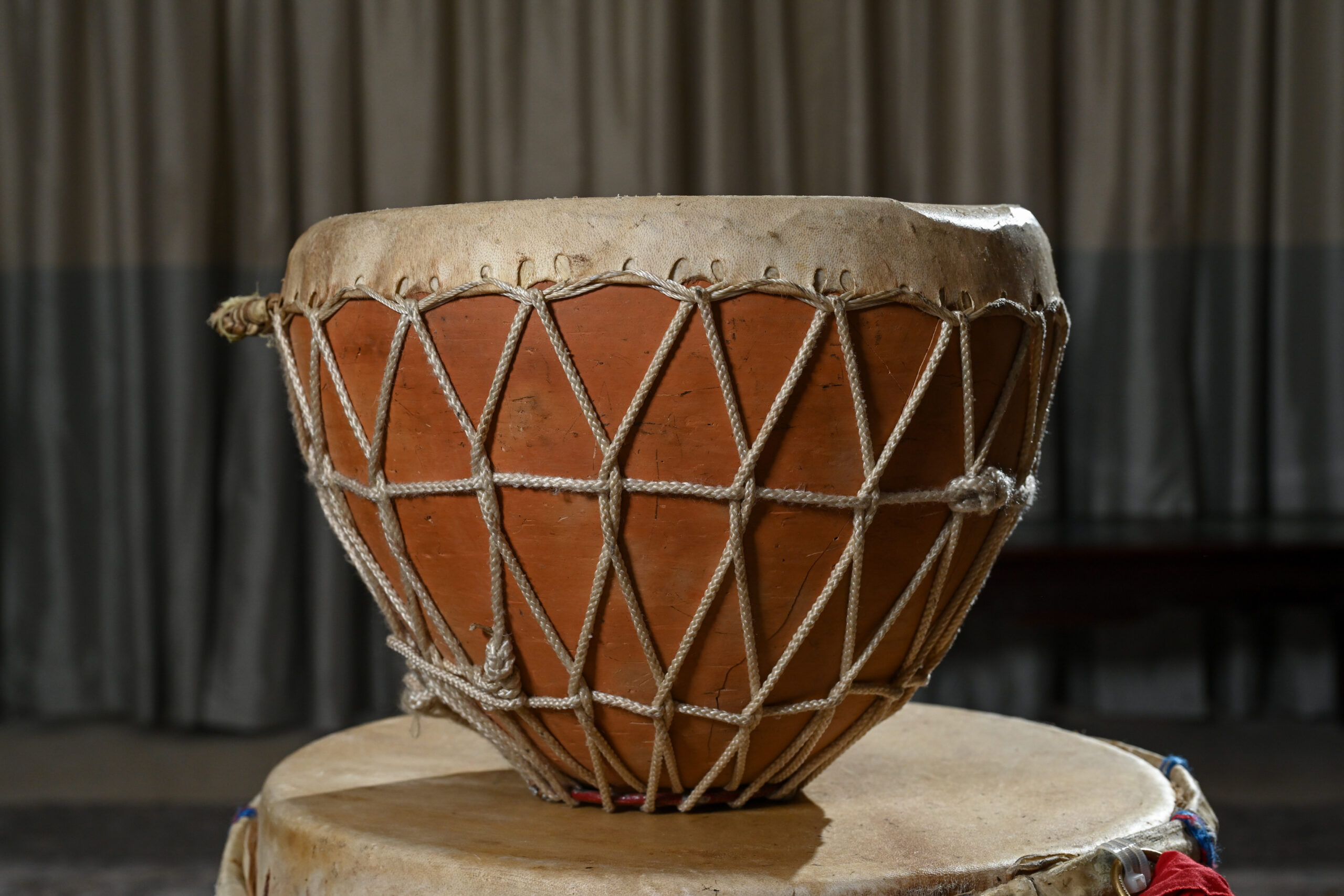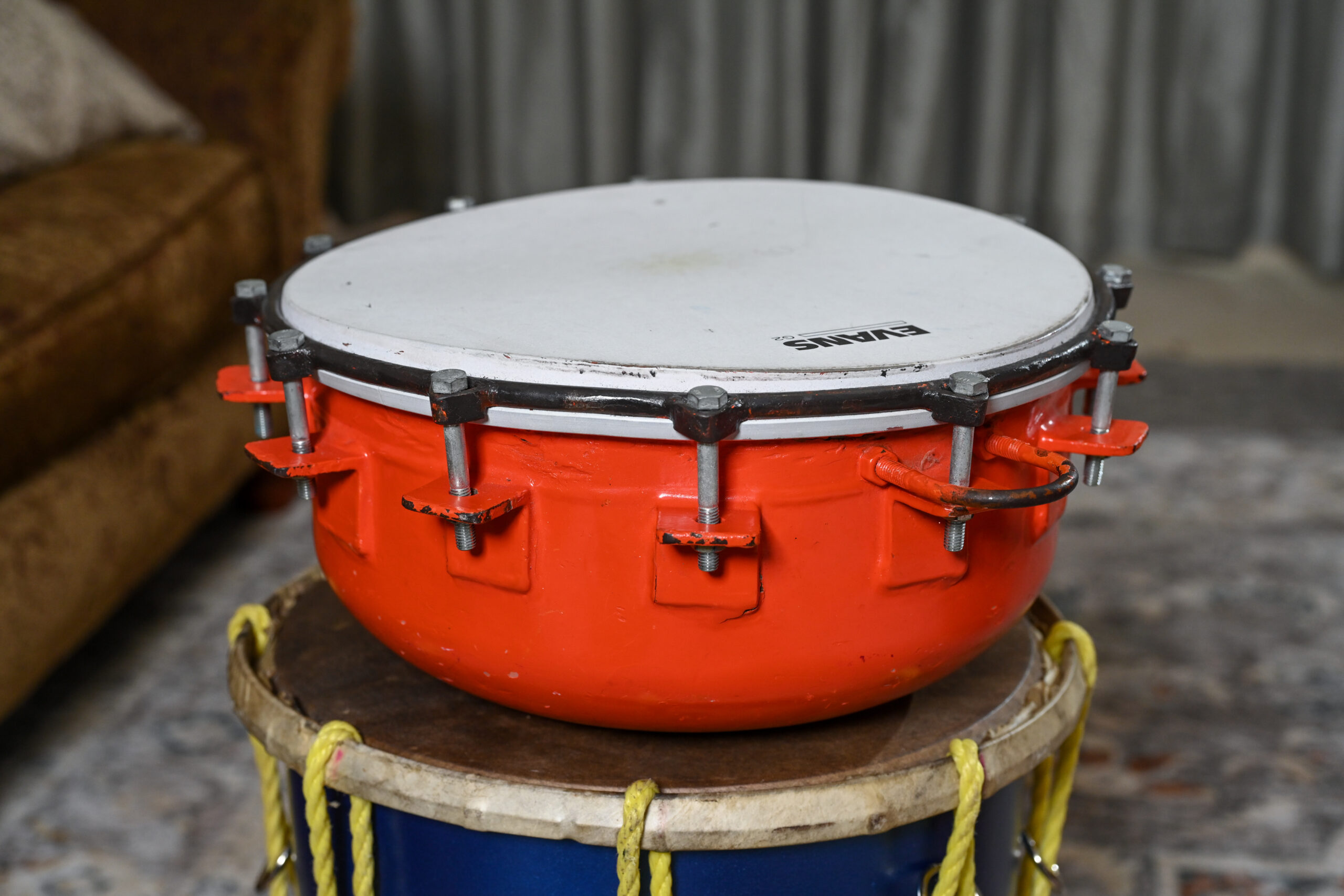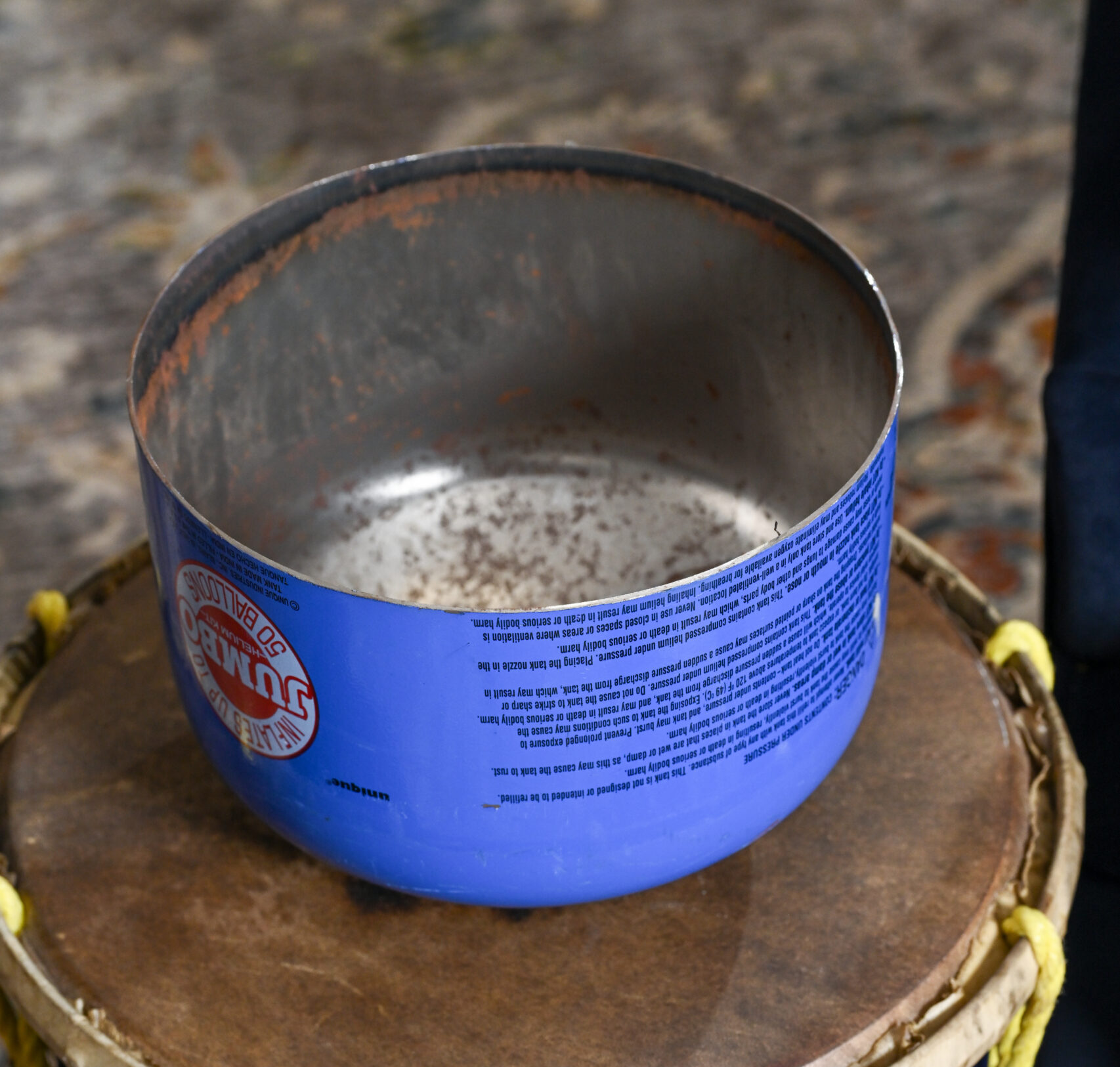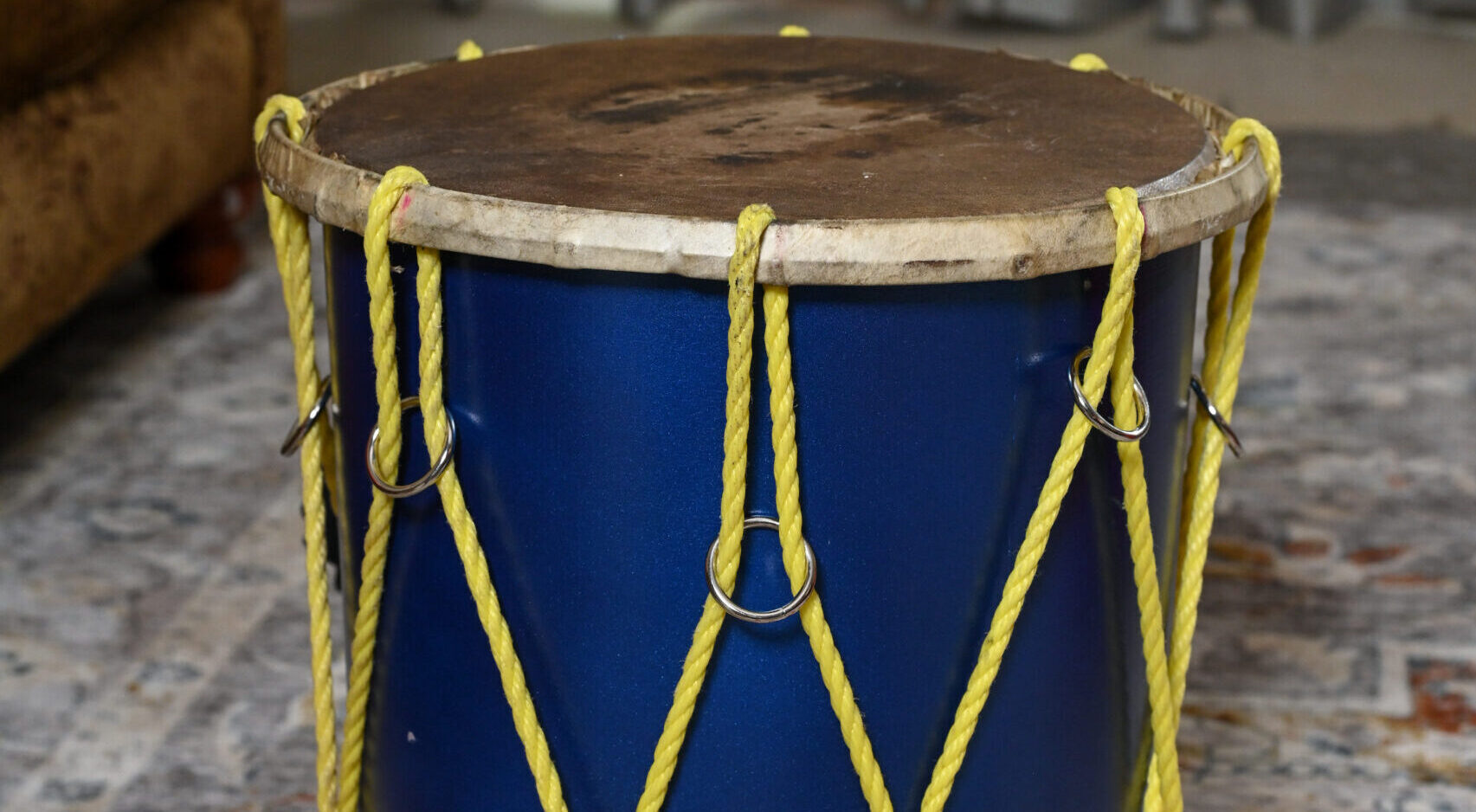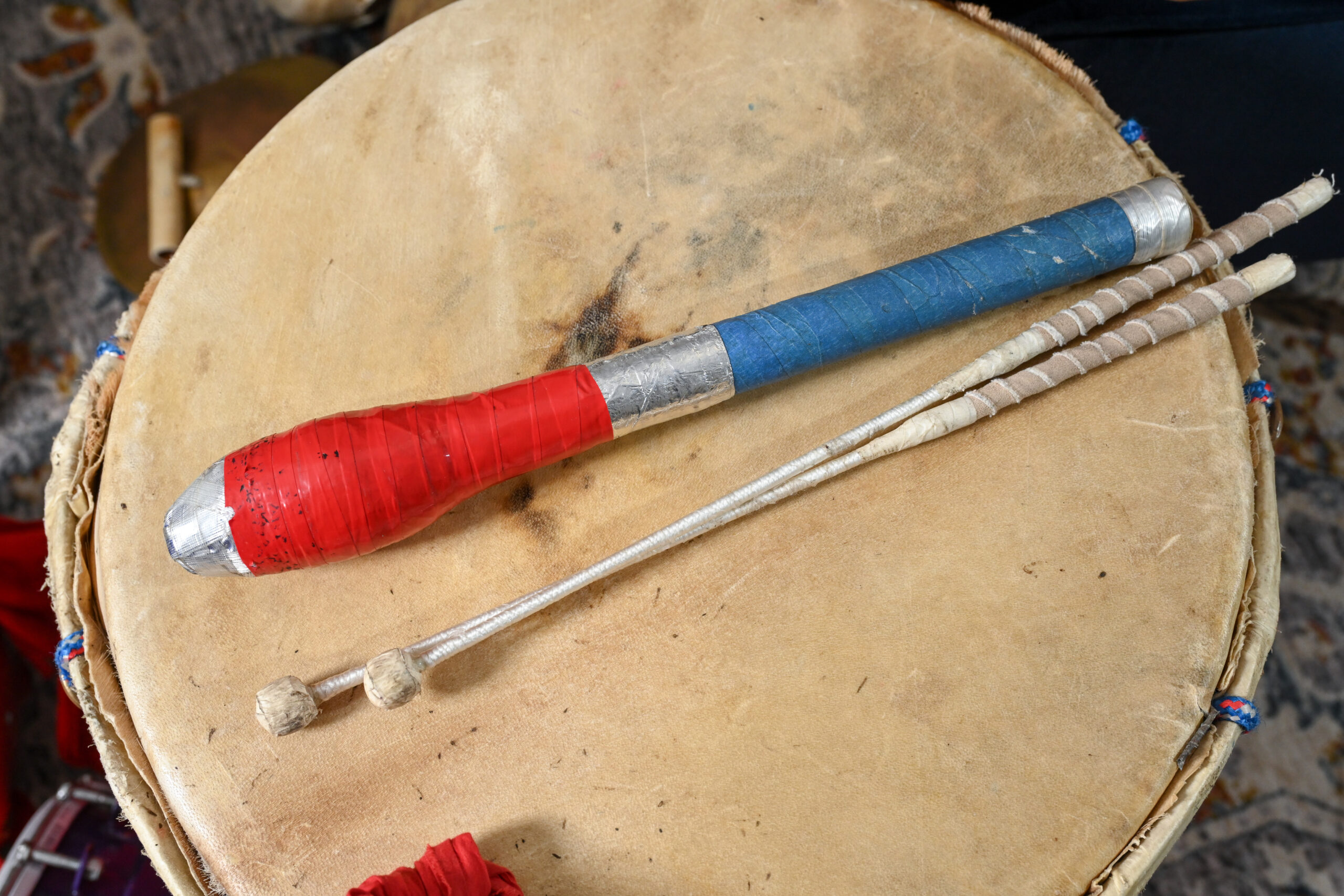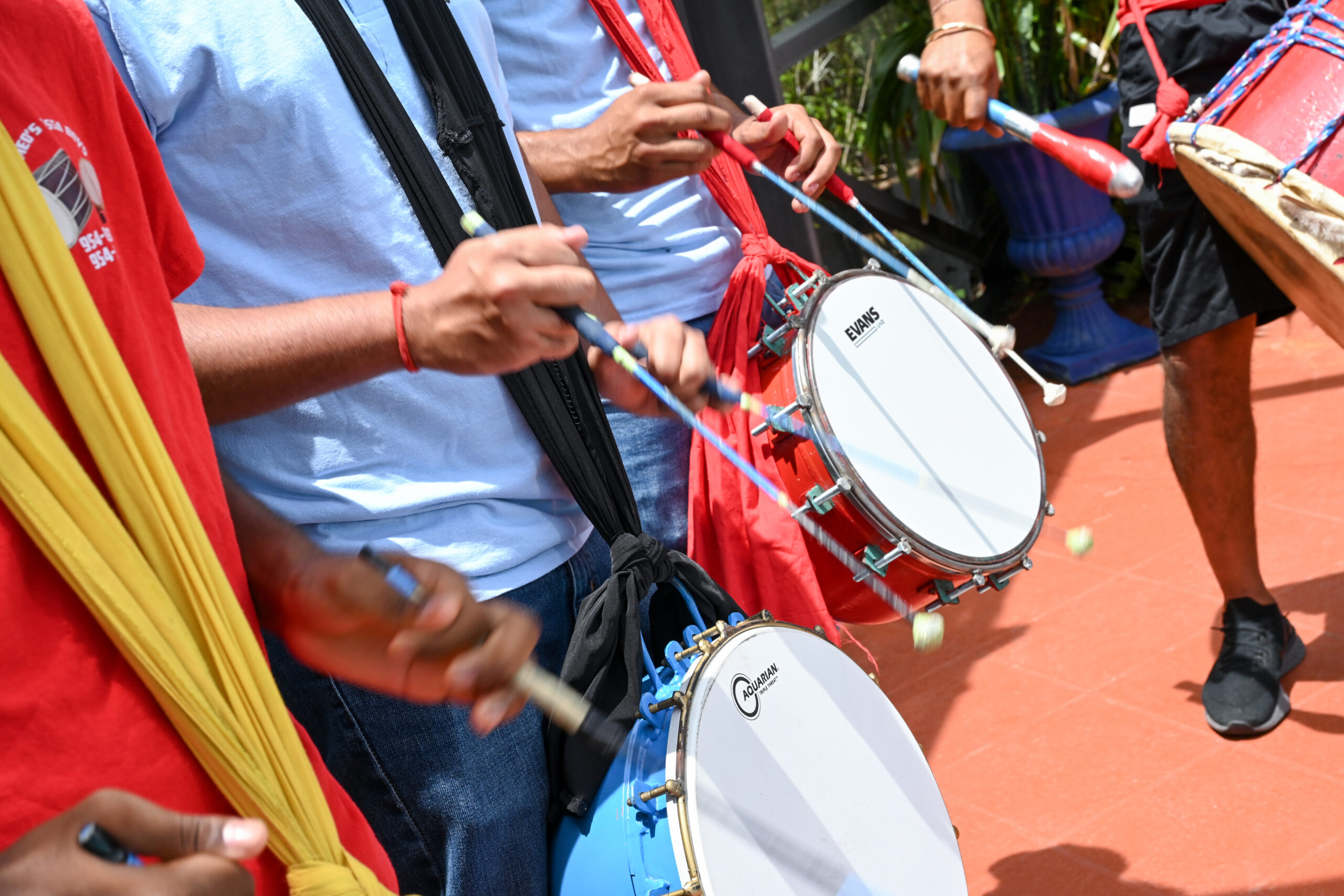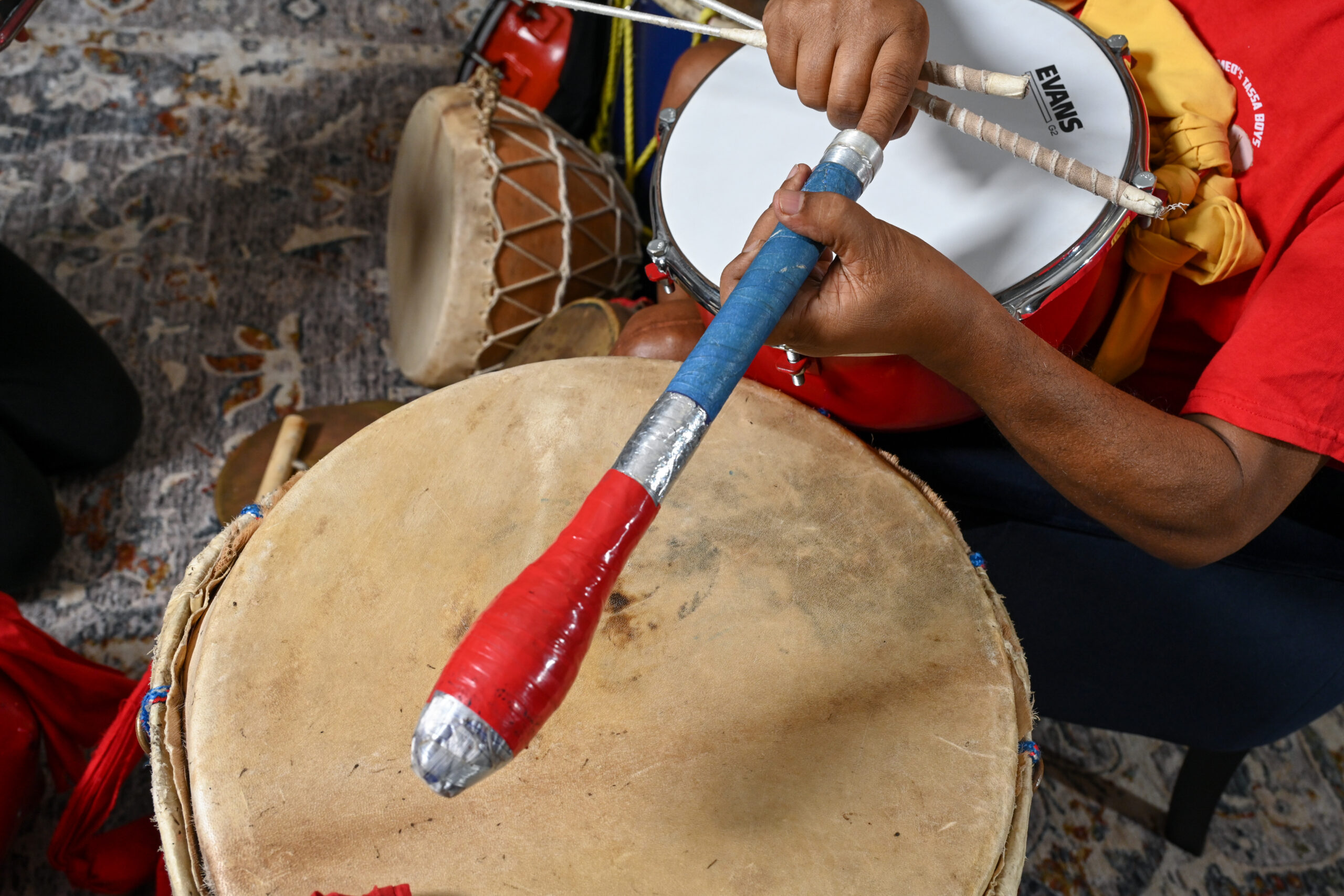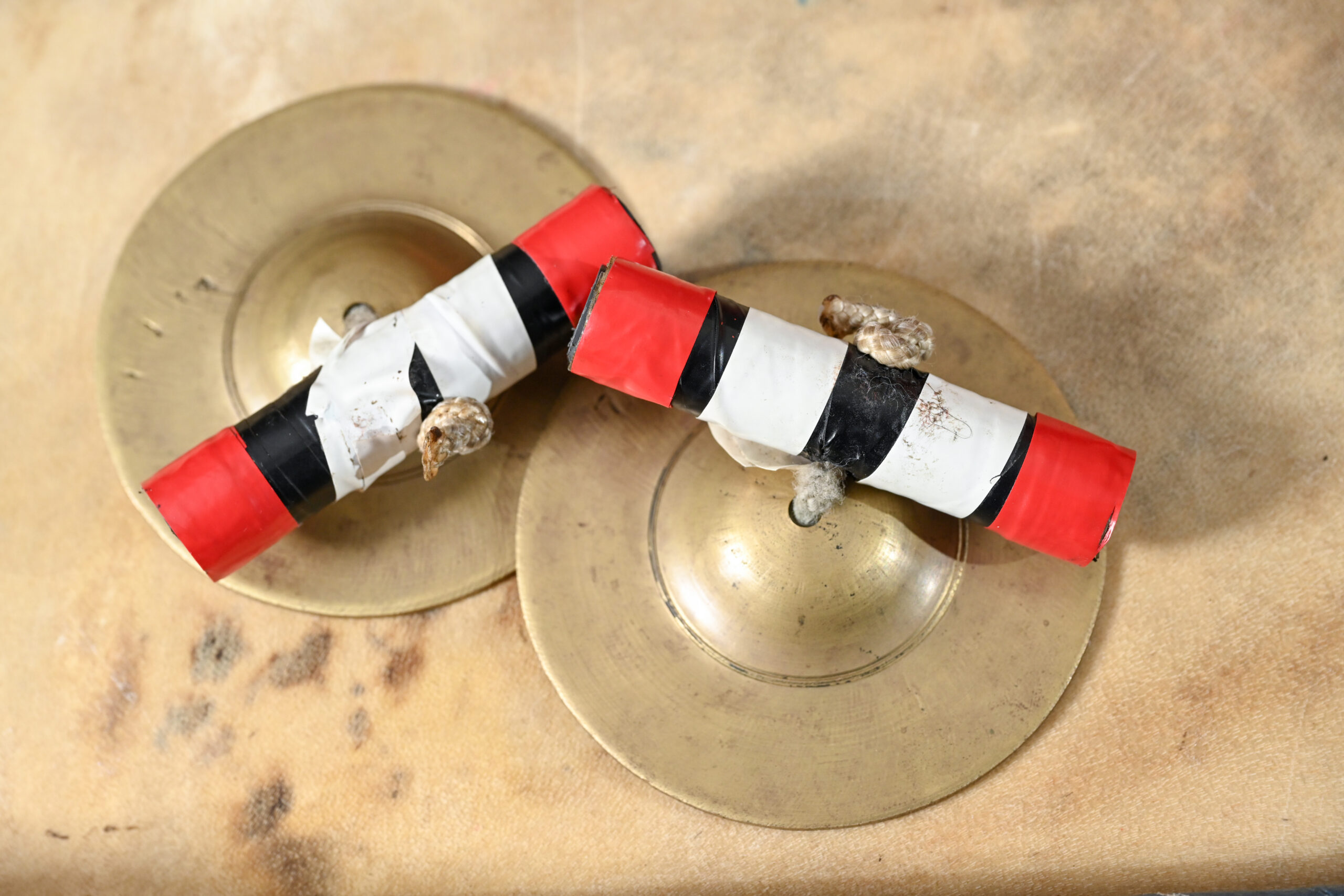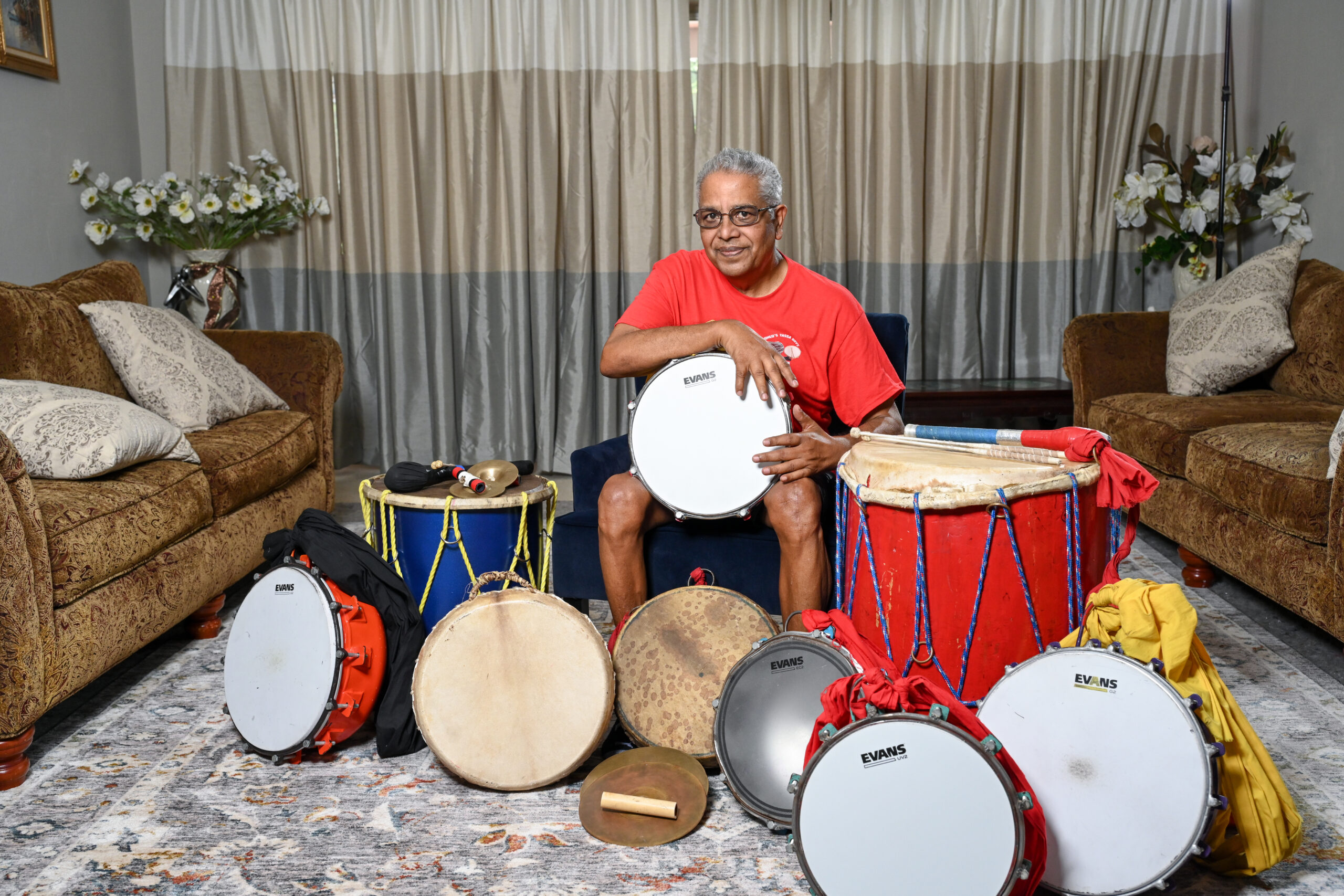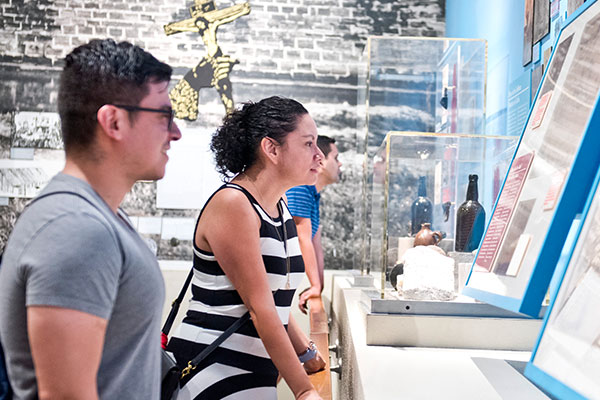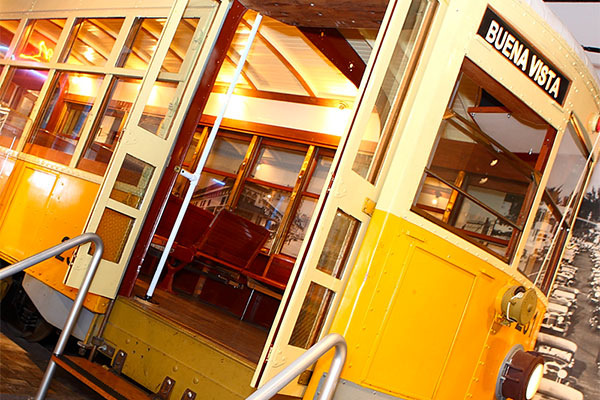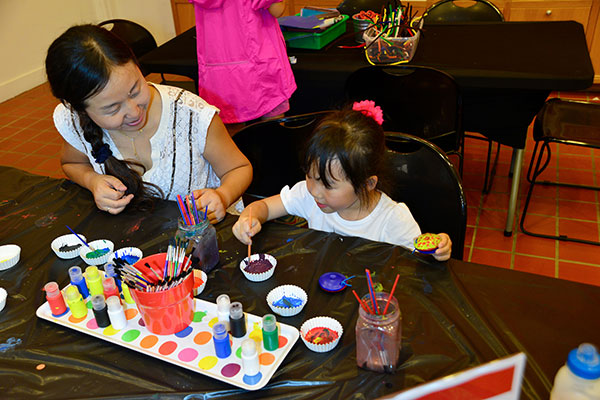Born in Trinidad and Tobago, Romeo Ragbir is a master musician and instrument builder who specializes in the tassa drum. Tassa originated in South India and was revolutionized in the West Indies where it was infused with calypso beats. Romeo leads the South Florida tassa group, Romeo’s Tassa Kids, and performs at Indo-Caribbean Hindu weddings and other cultural events and ceremonies in the community. His ancestors brought the tassa tradition from India to Trinidad, and Romeo learned from his father how to make and play these drums. He has passed these skills on to his children and grandchildren as well as many students all over Florida. For over thirty years, Romeo has dedicated himself to preserving and sharing this tradition and was recognized for his expertise in 2009 with the Florida Folk Heritage Award.
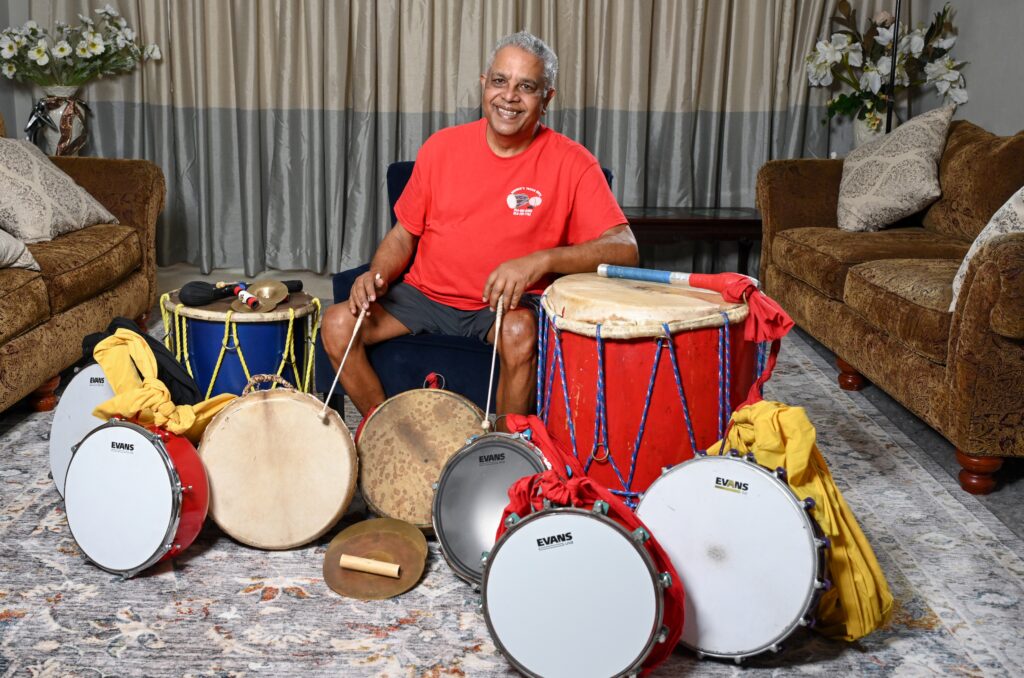
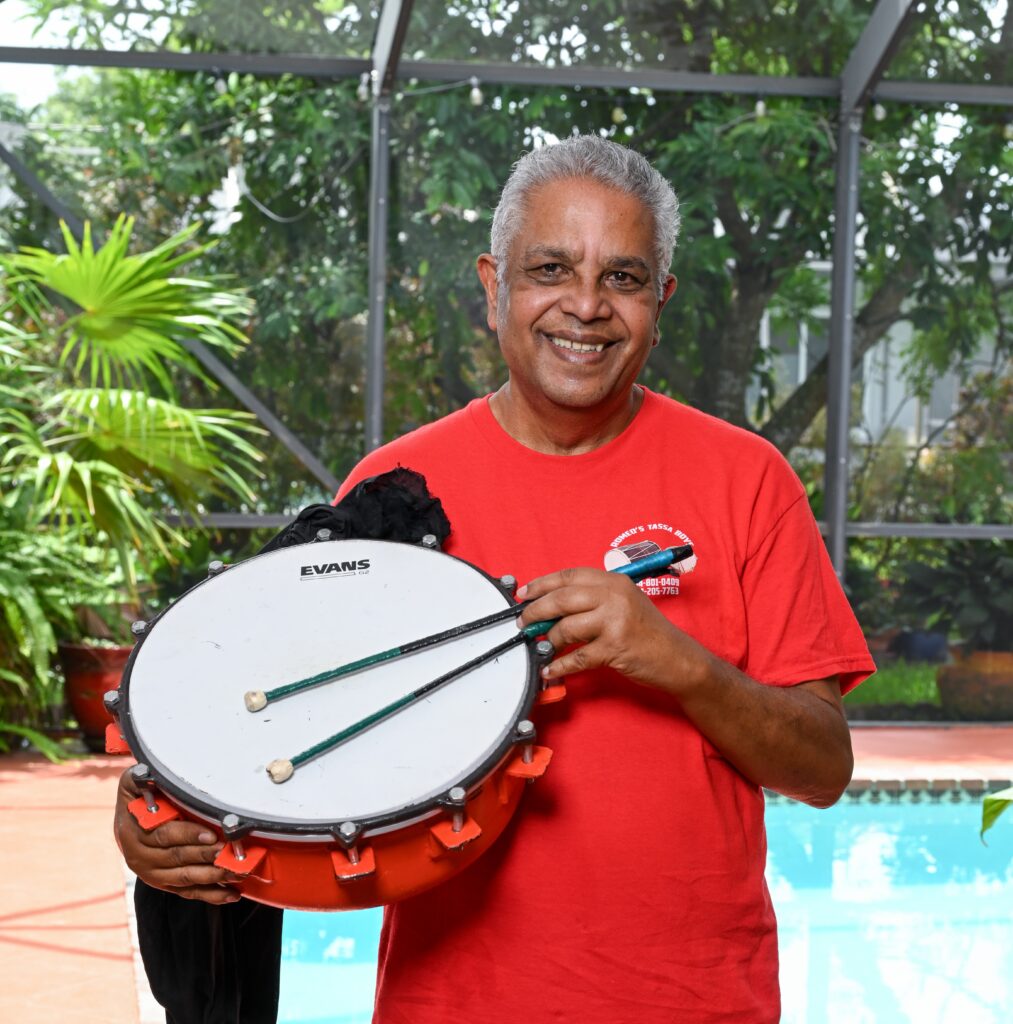
Residency Programs
Free Family Fun Day: Tassa Rhythms from Trinidad
Saturday, September 14
FREE, Registration required
Drum Building Workshop: Make Your Own Tassa Drum
Saturday, October 19
Paid program, Registration required
Diwali Traditions Demonstration at CultureFest 305
Saturday, November 9
FREE, Registration required
More about Romeo Ragbir
The following is from an interview HistoryMiami Museum conducted with Romeo Ragbir in 2024.
1. What is your name and where are you from?
My name is Romeo Ragbir. I was born in Trinidad and Tobago.
2. When and why did you move to Miami?
We moved to Miami in 1984 because it was too cold in New York.
3. What music traditions do you practice?
We practice East Indian, traditional tassa drumming.
4. In what kinds of settings is the instrument played?
Tassa drumming is played at weddings, parties, and other Hindu religious functions.
5. How did you learn to make and play this instrument?
I learned to make and play the drums from my father.
6. What are the steps in building a tassa drum and what materials are used?
The traditional process of making a tassa uses clay shells. The shells are formed and molded from red clay and then are baked. They come in various sizes. The skins used for the drum heads are usually goat skins. The skins need to be shaved and cleaned, and they must be free of hair.
The skins are measured with the shells, marked, and cut to the size of the shell being used. Once cut, you need to make holes for threading (sewing). You also use a 3” or 4” metal ring for the bottom of the shell. Originally, deer skin was cut into thin long strips which were used for the lacing. Now we use nylon rope of different sizes for the same job.
Once the skin is cut and the holes are made, you need to cover your drum. You submerge the goat skin in water and let it soak for at least one hour, depending on how thick the skin is. When the skin is soft and pliable you can proceed to cover your drum. The process takes about an hour.
The modern drums used today are made from helium tanks which are cut and used for the drum base. Plastic drum heads are used to cover the drum. Brackets are welded to the drum to hold the drum heads in place. Once you put the drum heads together, you can tighten the screws to get the drum to the pitch or sound you desire. The difference is that with the original goat skin drums you need to heat the drums to get the desired pitch or sound.
7. What do you enjoy most about making and playing these instruments?
The pleasure comes from seeing the enjoyment that the music brings to people.
8. What do you value most about teaching others to make and play tassa drums?
I take pride in knowing that the tradition is being passed on and that it won’t end with the older generation.

Supported by the National Endowment for the Arts

